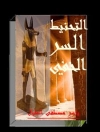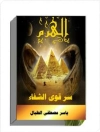Essays offering new approaches to the changing forms of medieval religious masculinity.
The complex relationship between masculinity and religion, as experienced in both the secular and ecclesiastical worlds, forms the focus for this volume, whose range encompasses the rabbis of the Babylonian and Palestinian Talmud, and moves via Carolingian and Norman France, Siena, Antioch, and high and late medieval England to the eve of the Reformation. Chapters investigate the creation and reconstitution of different expressions of masculine identity, from the clerical enthusiasts for marriage to the lay practitioners of chastity, from crusading bishops to holy kings. They also consider the extent to which lay and clerical understandings of masculinity existed in an unstable dialectical relationship, at times sharing similar features, at others pointedly different, co-opting and rejecting features of the other; the articles show this interplay to be more far more complicated than a simple linear narrative of either increasing divergence, or of clerical colonization of lay masculinity. They also challenge conventional historiographies of the adoption of clerical celibacy, of the decline of monasticism and the gendered nature of piety.
Patricia Cullum is Head of History at the University of Huddersfield; Katherine J. Lewis is Senior Lecturer in History at the University of Huddersfield.
Contributors: James G. Clark, P.H. Cullum, Kirsten A. Fenton, Joanna Huntington, Katherine J. Lewis, Matthew Mesley, Catherine Sanok, Michael L. Satlow, Rachel Stone, Jennifer D. Thibodeaux, Marita von Weissenberg
Mục lục
Introduction
From salve to weapon: Torah study, masculinity, and the Babylonian Talmud – Michael L Satlow
Gender and hierarchy: Archbishop Hincmar of Rheims [845-882] as a religious man – Rachel Stone
The defense of clerical marriage: religious identity and masculinity in the writings of Anglo-Norman clerics – Jennifer Thibodeaux
Writing masculinity and religious identity in Henry of Huntingdon – Kirsten Fenton
‘The quality of his
virtus proved him a perfect man’: Hereward ‘the Wake’ and the representation of lay masculinity – Joanna Huntington
Episcopal authority and gender in the narratives of the First Crusade – Matthew M. Mesley
‘What man are you?’: piety and masculinity in the
vitae of a Sienese craftsman and a Provençal nobleman – Marita von Weissenberg
‘Imitate, too, this king in virtue, who could have done ill, and did it not’: lay sanctity and the rewriting of Henry VI’s manliness – Katherine J Lewis
John of Bridlington, mitred prior and model of the mixed life – Catherine Sanok
Why men became monks in late medieval England – James G. Clark
Feasting not fasting: men’s devotion to the Eucharist in the later Middle Ages – P H Cullum
Giới thiệu về tác giả
KATHERINE J. LEWIS is a Senior Lecturer in History at the University of Huddersfield.












